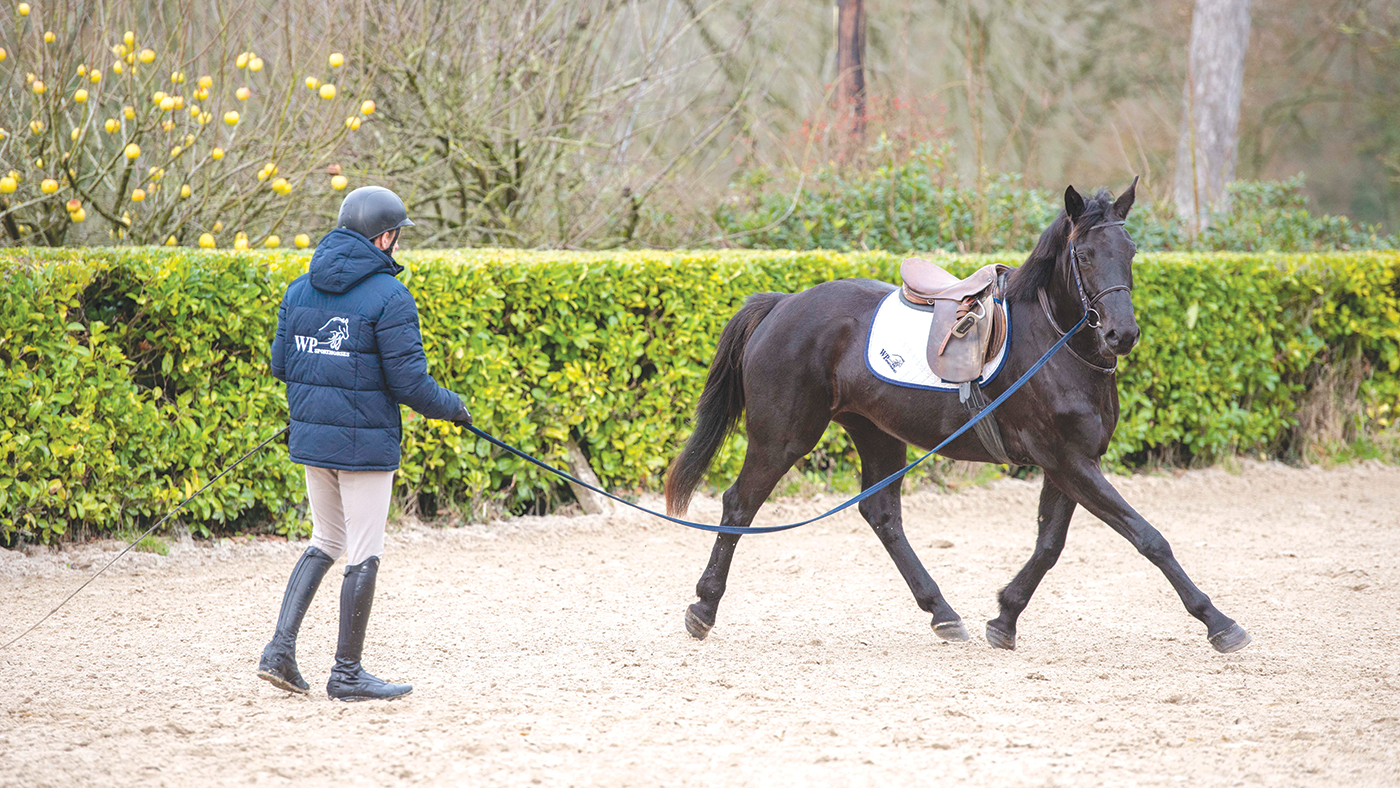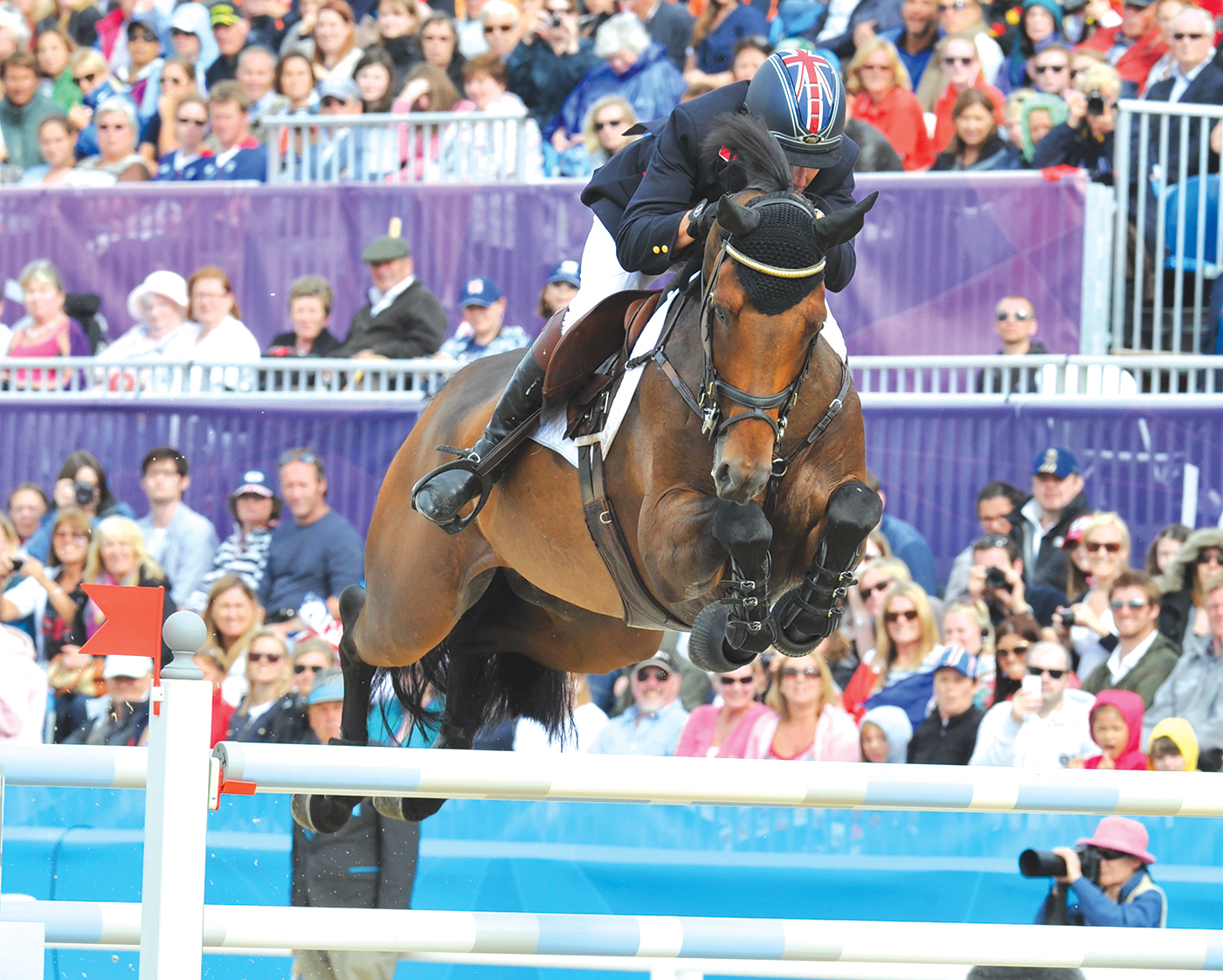Patience and preparation are key, but is there a tried-and-tested route to producing a horse to the top level? Sarah Radford asks the experts
THERE has never been a better time to be a producer of young horses. At the top end of the sport, a burgeoning calendar of five-star shows creates an insatiable demand for big-track jumpers. At the amateur level, horse sales are also booming, with lockdowns prompting unexpectedly time-rich enthusiasts to focus on their passions.
While this may be an attractive market, with big money to be made for the right horse, producing is a long and expensive game that can be riddled with disappointment.
“A lot depends on the end game of the producer – they need to evaluate how good the horse is and what their financial pressure is,” Olympic team gold medallist Peter Charles explains. “You have to learn to judge a horse’s ability to learn and its physical strength.”
Often, the guiding principle in horse production is not so much about knowing what to do, as knowing what not to do.
“The most important thing with a young horse is not to mess them up. You need to protect the horse at all times until it gets to seven or eight,” says Irishman Ger O’Neill (pictured below) of Castlefield Sports Horses, who has an established track record at producing to the top level.
“There are a lot of individual systems, and that’s fine, but once you do too much too early you ruin a horse and many get lost in the system because of it.”

In the UK and Ireland, many adhere to the traditional approach of backing horses as three-year-olds before turning them away. This is followed by further light education and potentially the introduction of competition at four.
West Sussex producer Alex Hempleman follows this approach. But while he may have his four-year-olds “popping a course at home,” he likes to give them lots of breaks and acknowledges that “the best place for a four-year-old is often in the field”.
“We all have the young horse championships in our mind and while they might be a nice thing to do, ultimately we are looking to produce a horse as best we can. There is no point giving a horse a bad experience,” he counsels.
Increasing knowledge of the impact of stress on the immature skeleton, particularly in bigger and slower-maturing modern warmbloods, has prompted some producers to delay backing until they are older. It can also reduce the risk of asking too much too soon from a capable horse.
It’s tempting to aim a good four-year-old at young horse championships, but this can be a contentious issue, with people concerned over the demands on young horses, particularly in the younger bracket.
Peter is among those who waits to start a horse until the spring of their four-year-old year.
“Mine do hardly anything until they’re five as that way you don’t overjump or overtrain them,” he says.
HOWEVER, the choices producers make are realistically often influenced by business model.

“William Funnell does a super job at the Billy Stud but he has to sell on a large basis, so it’s important for him to get his horses out in age classes,” Peter says.
“Buyers do compare results but that only tells one part of the story. I breed five to six horses a year and because I am producing a low number I can afford to take my time.”
Kim Barzilay, who has produced horses through the British system that have gone on to championship level, including Tinka’s Serenade, Lizziemary and Kimba Flamenco, gives her horses a brief start as three-year-olds but is cautious not to rush them into the ring.
“We don’t chase championships with four-year-olds, we let them enjoy life and know when to stop and give them a break,” she says. “I earn my living buying and selling, so producing our home-breds to Foxhunter is recreational for me really.”
Shirley Light, who runs the Brendon Stud at Pyecombe, usually contests the young horse championships but adopts a common sense approach.
“What a horse is ready to do depends on their temperament and conformation,” she says. “If they’re a little rubber ball or big old cruise liner that will make a massive difference, as does their attitude and intelligence.”
If you are campaigning a four-year-old, she says, it is best to pick your shows wisely and pace them.
“Some of the four-year-old classes get too big too early in the year and we don’t jump those any more,” she says. “I also don’t believe in starting them off too early, it’s a long year for them then while they’re still growing.”
Ger has been successful in young horse finals, winning at the world breeding championships for young horses at Lanaken, Belgium, four times – once with a five-year-old, twice with six-year-olds and once with a seven-year-old – but says he would only aim to be competitive there with a particular kind of horse.
These are usually smaller, quicker and more agile horses that are often faster-developing, have natural balance and are more likely to be ready to jump against the clock. Winners at Lanaken, however, are not necessarily the ones who will go on to a big-track career.
“Those horses would probably go on to jump 1.35m or 1.40m. If it’s a mare, it will look good on her CV and you might breed from her at that point. You can ask them more early on because they won’t need to jump the biggest grand prix at nine or 10,” Ger explains. “Those horses [who will go on to big tracks] you will be more happy with for jumping a double clear. Quite often it’s the horse who finishes fifth who is the one everyone is trying to buy.”
Ger adds that big-jumping horses often “come late” and are the ones you’d usually want to put back in the field once they’re established. It’s at this stage that experience can become critical in evaluating the calibre of horse you have.
“You can end up taking advantage of a horse if it’s very talented, as they find it easier, and I’ve done it in the past,” Peter warns, recalling that with his 2012 Olympic ride Vindicat, he was always playing the long game.
“He was with me from five years old and he was nine before I asked him to win a class. Winning is not something that impresses me, it’s the capability of winning later on that matters.”
AS the market for horses has become increasingly global, production systems have become more standardised. Ger notes, however, that Ireland and Britain “do have a name for producing their horses a bit quicker” than in some areas of Europe.
Emma Stoker established a great reputation for producing young horses while working for Townhead Stud, but is now based in Belgium riding for Axel Verlooy. She says she was surprised to find the approach to starting young horses there is slower and more relaxed than in the UK.
“They are allowed to be horses for longer,” she says.
Horses at Axel’s typically start being handled at four but do very little until the age of six.
“They might jump them a bit at four and if they have a mare that looks good, they’ll turn it away to have a foal first and then they’ll start it again at six – that would be unheard of in the UK, it would be too late to aim for Foxhunters,” says Emma.
“But you can give them a bit more of a consistent education rather than starting and stopping.
“We had a really nice five-year-old last year that I was desperate to take to a show but Axel said, ‘No, it doesn’t need to.’ This year we took it to two day shows and then to the Sunshine Tour and she did a better job there than most just because we waited. She was like a sponge.”
For Emma and others, the foundation “checklist” they like to see established at home to ensure a positive first experience in the ring is the ability for the horse to accept the hand and leg and to have a basic ability to shorten and lengthen.
“You need the engine, the clutch and the brake,” she says. “We spend more time on that than jumping – these simple things make everything else a lot easier.”
Turns are broadly viewed by producers as less worrying for horses than speed.
“I’ve never forgotten what Marion Hughes once told me: ‘Don’t ask a horse to go faster than it’s comfortable with because as soon as a horse is outside of its comfort zone, that’s when you start to do damage,’” says Ger.
Emma adds: “My idea of producing a horse to do a jump-off is so it doesn’t know it’s gone fast, it’s just smooth.
“I always try to make turns a little tighter rather than gallop.”

“Winning is not something that impresses me, it’s the capacity of winning later on that matters,” says Peter Charles, who played the “long game” with his London 2012 ride Vindicat
Continental tours have increasingly become viewed as the ideal environment for bringing on a young horse, offering the advantage of four to six weeks of intensive education, gradually building a horse’s confidence around appropriately built age tracks.
Ger feels they offer reliably good ground and course-building, but he says it is equally possible to produce a horse on a domestic circuit.
“The problem [in Ireland] is that sometimes county shows might not be built by someone who knows young horses and the fences might be old-fashioned and heavy and could frighten a horse,” he says. “On a tour you might be able to do eight or nine classes across four weeks and really bring the horse on.”
Emma agrees that the Continental approach to course-building is well judged, and is certainly beneficial to correct production.
“In four-, five- and six-year-old classes all the fences have groundlines, no distances are too short and they can really learn,” she says. “There are no traps.”
Others argue that the system within Britain – which combines traditional newcomers and Foxhunters, which are open to all ages of horse, with age class series – are more than adequate for the job.
“Britain has produced many grand prix horses,” says Shirley Light. “But an unfriendly track puts pressure on horses, far more pressure than a rider does.
“Short distances can pull their heads off the fence – you just want flowing, simple tracks for four-year-olds and nothing too technical for five-year-olds.
“One of the things I like in Europe is that their age class tracks are the same height in the first round and the jump-off; you know what you’re getting,” she adds. “I’d like to see it in this country in all our training shows.”
Whichever route people feel is right for their horses, there is certainly one element everyone needs to master before dealing with the responsibility of moulding a showjumper for its future.
“You need patience,” says Emma. “You have to have so much patience.”
You can also read this featutre in the 27 May issue of Horse & Hound magazine.
You might also be interested in…

4 simple exercises to help improve your horse’s core strength

10 things successful riders don’t do and you should avoid too

Will Plunkett: meet the breaker and trainer whose clients include the Billy Stud *H&H Plus*

‘We want our horses to be the nicest at an event’: how business is booming for these young horse producers *H&H Plus*

